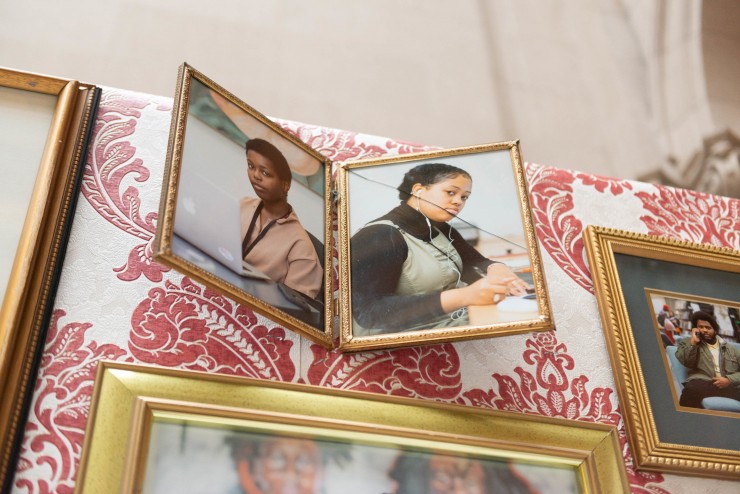To say that Deyane Moses ’19, ’21 (Photography BFA, Curatorial Practice MFA) entered MICA as an nontraditional student is an understatement.
Older than most entering freshmen, Moses had a seven-year background in the military, where she was trained in video as a broadcast journalist. She was stationed in Korea for three years — she and a team would go out into the field to document the stories of service members living overseas. Later, she would serve as the Pentagon Channel’s bureau chief covering Department of Defense matters, then, as a civilian, move to Los Angeles to work for Voice of America.
At one point during those years, a combat cameraman in her unit got her interested in taking pictures. Moses was immediately hooked, but it wasn’t until the move to Los Angeles that she began to seriously hone those skills. And the more she dove into photography, the more she questioned where she would go with her career.
“Journalism is art,” Moses explained. “But other than just tell stories about what is happening in the world, I wanted to do something to make the world a better place. I wanted to do that with photography.”
She began by moving to Pensacola, Florida, where she obtained an associate’s degree in photography. But as a native of the Washington, DC, suburbs — she lived in Northern Virginia and Prince George’s County, Maryland — attending MICA was her ultimate goal. Moses described her application to the College as nerve-racking, and once she was accepted, she took nothing for granted. “I was taking seven or eight classes at a time, because I was trying to maximize the opportunities I had while at MICA. My mind set was, ‘I want to take in everything — internships, student activities, everything,’” she said.
So when it was time to begin work on a junior thesis project, she decided to take the advice of Dawoud Bey, a visiting artist. “He told me, ‘Stay local and think about your community.’ At the time, I had just started attending Black Student Union meetings, so I decided to inquire about MICA’s Black History.”
That project, which began as something that could easily fit into Moses’ schedule, evolved into something much larger. Called Maryland Institute Black Archives (MIBA), it not only became Moses’ passion, it has begun to effect some of the change she hoped for when she decided to pursue a different path.
 INSTALLATION VIEW OF THE BLACKIVES EXHIBITION, 2019
INSTALLATION VIEW OF THE BLACKIVES EXHIBITION, 2019
“The project became about Black history at MICA — and also the lack of it when I started to look for some,” Moses said. “My goal was to revive that lost history and tell these stories to the community at MICA and even beyond.”
MIBA is a collection that shares the stories of the College’s first Black artists, the accomplishments of those who were denied entrance, and the portraits of MICA’s current Black community. Its physical archive includes documentary images, ephemera and facsimile artifacts drawn from databases and special collections. In addition, it includes environmental portraiture and collects oral histories to revive the voices of the past.




 INSTALLATION VIEW OF THE BLACKIVES EXHIBITION, 2019
INSTALLATION VIEW OF THE BLACKIVES EXHIBITION, 2019